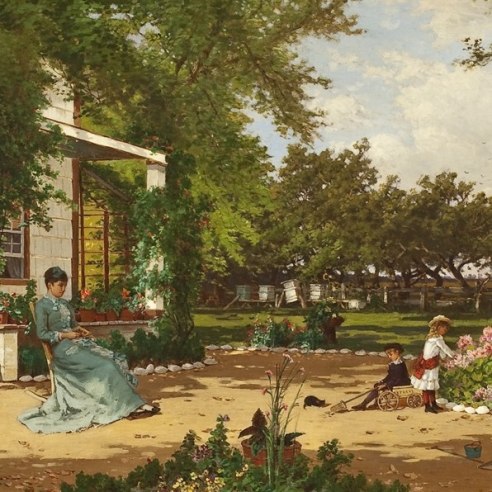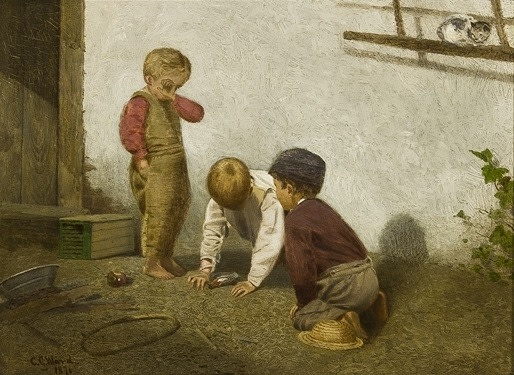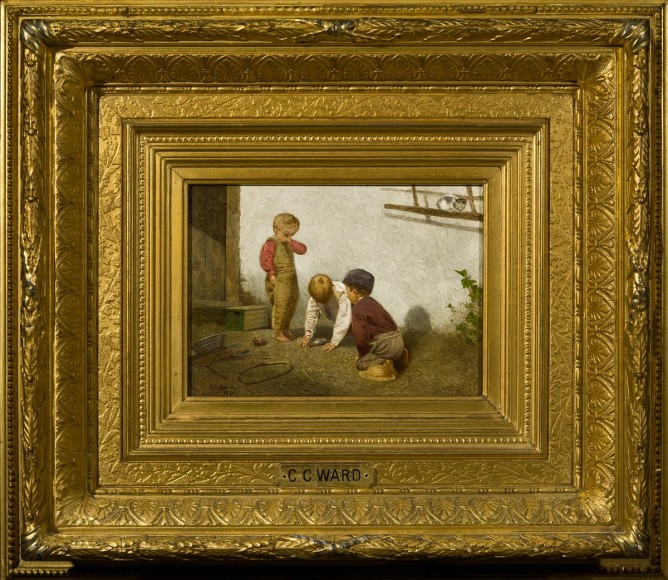
CHARLES CALEB WARD (1831–1896)
His Only Pet, 1871
Oil on board, 5 5/8 x 7 7/8 in.
Signed and dated (at lower left): C. C. Ward 1871
RECORDED: “Brooklyn Art Association,” Brooklyn Daily Eagle, November 2, 1871, p. 4
EXHIBITED: Brooklyn Art Association, New York, 1871, no. 110
EX COLL.: Jean Hurlbut Compton (1928–2006) (Mrs. George Robert Compton, Jr. [1924–1996]), Newton, New Jersey; to her estate, 2006–11
Painted in 1871, His Only Pet hails from Ward’s period of activity in New York. It is one of Ward’s typically small, gem-like genre pieces, and as with many of these the artist manages to combine both a humorous and sentimental subject with a variety of masterful details that subtly enrich the composition. Outside a weathered, stuccoed brick barn, three barefoot urchins discover a dead bird on the ground. A calico cat, having killed the bird, watches the scene coolly from a perch high up on a ladder that hangs on the exterior wall of the barn. Two of the boys kneel down to get a closer look at the bird, marveling at its diminutive, upturned form. The third boy, on the other hand, remains standing and wipes a tear from his face with the back of his hand, having lost his only pet that somehow has escaped its cage. Filling out the composition are a few expertly rendered anecdotal details, including a half-eaten apple, a metal pan, what appears to be a small wooden trap, and other bits of detritus at the left, and a bit of ivy creeping along the white wall at the right.
Beyond the obvious sentiment and humor evidenced in His Only Pet, Ward’s painting of a dead bird takes on an additional layer of meaning by playing artfully on the dead-bird-as-pathos motif that had currency in American art at mid-century. The dead-bird motif was a relatively uncommon in American art at mid-century, but it was particularly seen among the works of the American Pre-Raphaelites, the group of American followers of the truth-to-nature aesthetic of the English critic John Ruskin that was active in the 1860s and 1870s. The still form of a dead songbird was meant to elicit pathos via ruminations on the fragility and delicate beauty of life.




